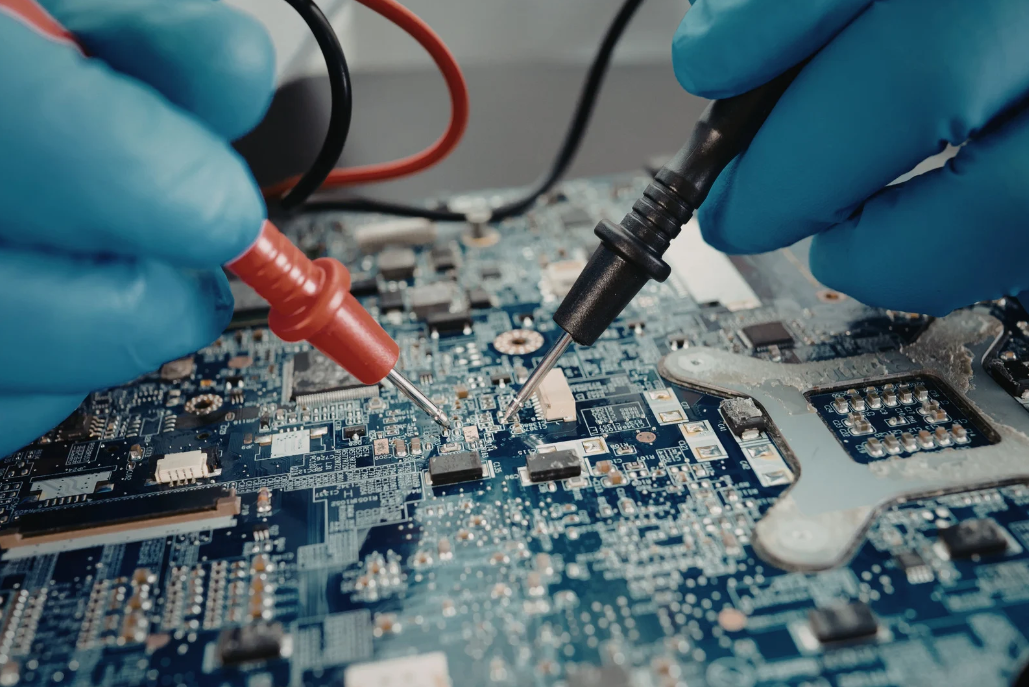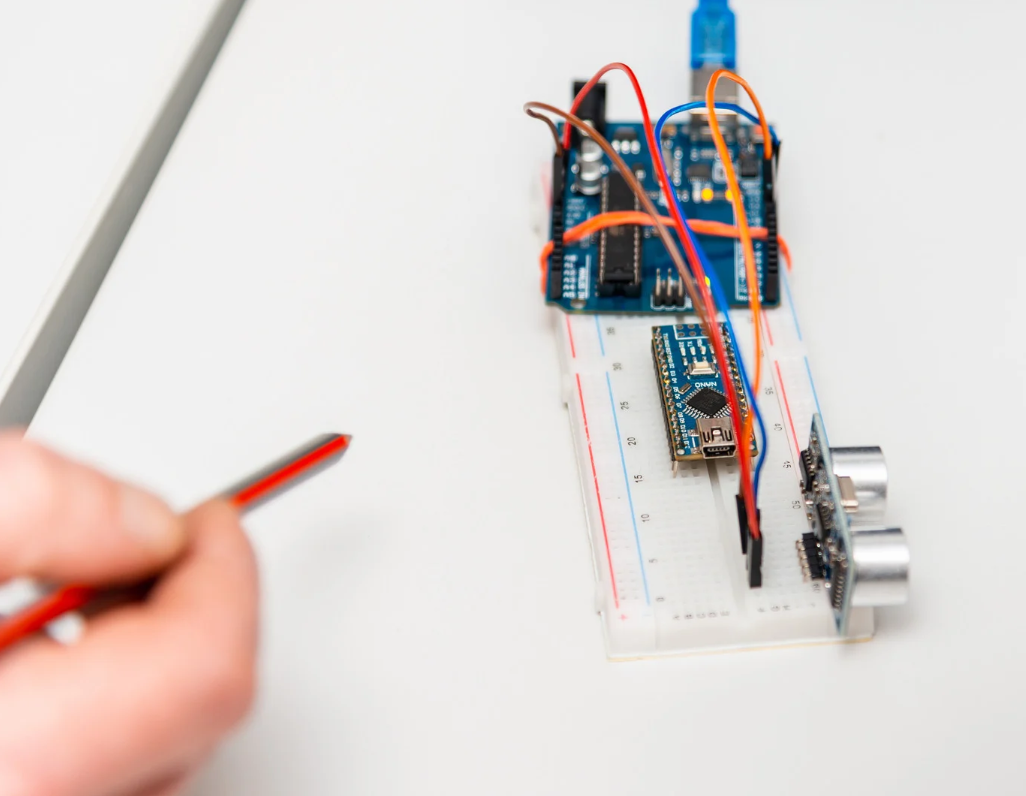Basics of Piezoelectric Effect
The piezoelectric effect is a fascinating phenomenon where certain materials generate an electric charge in response to mechanical stress. This effect is the foundation of PZT technology. PZT, or lead-zirconate-titanate, is a popular material used in various applications due to its high efficiency and reliability.
Types of PZT Materials
There are several types of PZT materials, each with unique properties. These materials can be tailored to specific applications, making them versatile and highly useful. Some common types include soft PZT, which is more sensitive and has higher piezoelectric constants, and hard PZT, which is more durable and can handle higher mechanical loads.
Applications of PZT Devices
PZT devices are used in a wide range of applications. For instance, a piezoelectric sensor can measure changes in pressure, acceleration, temperature, strain, or force. Other applications include precision movement and positioning in devices like mirror mounts or translating stages. The ability of PZT devices to produce small shifts with high force and stiffness makes them ideal for driving heavy loads over precise displacements.
Understanding the basics of PZT technology is crucial for selecting the right materials and devices for your specific needs. This knowledge will help you make informed decisions and optimize the performance of your applications.
Evaluating Your Application Needs
Determining System Requirements
Before choosing a PZT device, it’s crucial to understand your system’s needs. Key requirements include the intended application, desired precision, and operational dynamics. For instance, a system requiring high precision might need different specifications than one designed for dynamic operations.
Selecting the Right Actuator
Choosing the right actuator depends on your specific application. Consider factors like the type of movement required, load capacity, and environmental conditions. Not all actuators are suitable for every application, so it’s essential to match the actuator to your system’s needs.
Choosing the Appropriate Driver
The driver is just as important as the actuator. For dynamic systems, you need to calculate necessary Imax and Iave values to select the appropriate driver. Low hardware complexity and low power consumption are also key factors to consider. Consulting with an experienced engineer can help ensure you make the right choice.
While these are a few guidelines for selection, there are always subtle specifics to your dynamic applications. Consulting with an experienced field application engineer or a factory application specialist is the best way to ensure that you are selecting the right sensor for your needs.

Key Factors in Selecting a PZT Manufacturer
When choosing a PZT manufacturer, several key factors should be considered to ensure you get the best product for your needs. Experience and expertise in piezoelectric design and manufacturing are crucial. A company with a long history in the field is more likely to produce reliable and high-quality devices.
Experience and Expertise
Look for manufacturers with extensive experience in piezoelectric technology. Companies that have been in the industry for many years are often more knowledgeable and capable of producing superior products. For instance, some manufacturers have over 18 years of experience in designing and manufacturing PZT devices.
Customization Capabilities
Customization is another important factor. The ability to create special PZTs with proper calibration can be a significant advantage. Manufacturers that offer tailored solutions can better meet your specific needs, whether it’s for a unique application or a specialized device.
Quality Assurance and Testing
Quality assurance and testing are essential to ensure the reliability and performance of PZT devices. Reputable manufacturers will have stringent testing protocols to verify the quality of their products. This includes testing for factors like displacement, driving voltage, and load capacity.
Choosing the right PZT manufacturer involves evaluating their experience, customization capabilities, and quality assurance processes. This ensures you get a product that meets your specific requirements and performs reliably.
Manufacturing Process of PZT Devices
Material Selection
The manufacturing process begins by selecting the highest grade raw material, typically PZT powder. This material is chosen based on the specific requirements of the planned actuator, such as size, displacement, and driving voltage. Choosing the right material is crucial for the performance of the final device.
Electrode Printing
For multilayer devices, the inner electrodes are screen printed using a silver/palladium paste. A specially designed mask ensures precision during this step. Once the ceramic blocks and interconnecting inner electrodes are assembled, they are placed in an isostatic press. This increases the density of the PZT device, enhancing its mechanical properties and workability.
Assembly and Calibration
After the PZTs are cut to the appropriate size, they undergo a process known as Binder Burnout. This involves heating the PZTs to remove any binder material. The final step is calibration, where the PZTs are fine-tuned to meet specific performance criteria. This ensures that the devices are ready for their intended applications.
The fabrication route of PZT devices involves several critical steps, each contributing to the overall quality and functionality of the final product.
Mounting and Integrating PZT Devices
Proper Mounting Techniques
When mounting a PZT actuator, one common mistake is a mismatch in the mating faces. This is especially problematic in applications that do not use a floating axis. Even slight misalignments between flat faces can cause edge squeezing and high pressures at localized spots, potentially damaging the ceramic PZT.
Common Integration Challenges
Integrating PZT devices into systems can be tricky. One major challenge is ensuring proper alignment to avoid edge squeezing. Another issue is the need for precise calibration to ensure the PZT performs as expected. Our experts are continually pushing our offerings of standalone PZTs and integrated PZT devices.
Maintenance and Longevity
To maintain PZT devices and ensure their longevity, regular checks and calibrations are essential. Proper mounting and integration play a pivotal role in the device’s lifespan. Regular maintenance can prevent common issues and extend the life of the PZT device.
Integrating advanced energy harvesting technologies with medical devices plays a pivotal role in ensuring their efficiency and longevity.
Comparing Top PZT Manufacturers
Reputation in the Industry
When choosing a PZT manufacturer, reputation in the industry is crucial. A well-regarded company often indicates reliability and quality. Look for manufacturers with positive reviews and a strong presence in the market.
Product Range and Innovation
A diverse product range and continuous innovation are key indicators of a top manufacturer. Companies that offer a variety of PZT devices and regularly update their technology are more likely to meet your specific needs.
Customer Support and Service
Excellent customer support and service can make a significant difference. Manufacturers that provide comprehensive support, from initial consultation to after-sales service, ensure a smoother experience.
Choosing the right PZT manufacturer involves considering their reputation, product range, and customer support. These factors will help you find a reliable partner for your needs.
Future Trends in PZT Technology
Advancements in Material Science
Recent advances in piezoelectric wearable energy harvesting technology are pushing the boundaries of what’s possible with PZT materials. Researchers are exploring new composites and structures to enhance efficiency and durability. These innovations could lead to more robust and versatile PZT devices.

Emerging Applications
PZT technology is finding its way into a variety of new fields. From medical devices to consumer electronics, the potential applications are expanding rapidly. For instance, PZTs are being used in precision articulation for devices like mirror mounts and translating stages, offering small shifts with high force and load capacity.
Sustainability and Environmental Impact
As the world becomes more eco-conscious, the sustainability of PZT materials is under scrutiny. Efforts are being made to develop environmentally friendly alternatives and improve the recycling processes for PZT devices. This focus on sustainability is crucial for the long-term viability of PZT technology.
The future of PZT technology looks promising, with ongoing research and development paving the way for more efficient, versatile, and sustainable applications.
Conclusion
Choosing the right PZT manufacturer is crucial for the success of your project. With so many options available, it’s important to consider factors like the manufacturer’s experience, the quality of materials used, and the level of customer support they offer. Thorlabs, for instance, has over 18 years of experience in designing and manufacturing PZT devices, ensuring high-quality products tailored to your specific needs. Remember, the right PZT and driver combination can make a significant difference in the performance and longevity of your system. Take the time to evaluate your requirements and consult with experts to make an informed decision. By doing so, you’ll be well on your way to achieving precise and reliable results in your applications.
Frequently Asked Questions
What is PZT and how does it work?
PZT stands for lead-zirconate-titanate. It’s a material that changes shape when electricity is applied. This is called the piezoelectric effect. It helps in making precise movements in devices.
What are the main uses of PZT devices?
PZT devices are used in many areas like moving mirrors in cameras, controlling stages in microscopes, and even in medical tools. They are great for small, precise movements.
How do I choose the right PZT actuator for my needs?
First, you need to know what your system needs. Look at things like size, how much it needs to move, and the voltage it uses. Then, find a PZT and driver that fit those needs.
Why is it important to match the PZT with the right driver?
Matching the PZT with the right driver is key to making sure it works well and lasts a long time. A driver that gives too much voltage can damage the PZT.
What should I look for in a PZT manufacturer?
Look for a manufacturer with lots of experience and good reviews. They should also be able to make custom PZTs and have strong quality checks.
What are some challenges in mounting PZT devices?
Mounting PZT devices can be tricky. If not done right, they can get squeezed at the edges and break. Using the right mounting tools can help avoid this.



